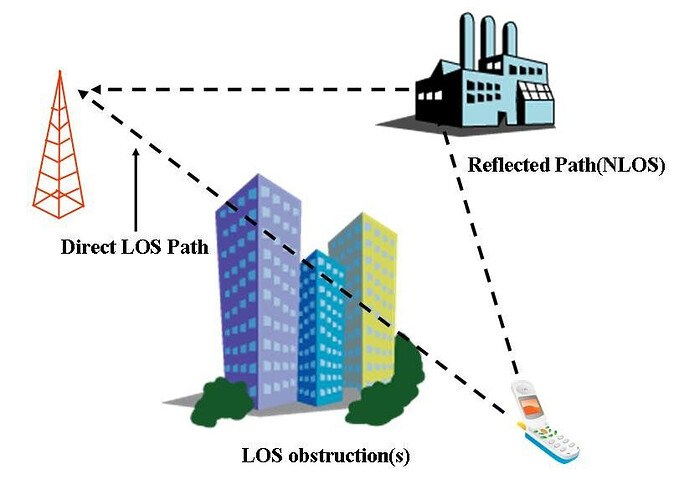Three types of line-of-sight (LOS) conditions in wireless communication are:
-
Line of Sight (LOS):
- Definition: A clear, unobstructed path between the transmitter and receiver.
Where to Use: Outdoor environments, rural areas, or high towers with direct visibility. - How to Use: Install antennas in locations with no obstacles between them, such as on rooftops or towers.
- Advantages:
Strong, high-quality signal.
Minimal interference or signal degradation.
High data rates and low latency. - Disadvantages:
Requires clear visibility, limiting use in urban or obstructed areas.
Terrain, weather, or large structures can block the signal.
- Definition: A clear, unobstructed path between the transmitter and receiver.
-
Non-Line of Sight (NLOS):
- Definition: No direct path between the transmitter and receiver; signal reaches the receiver via reflection, diffraction, or scattering.
- Where to Use: Urban areas, indoor environments, or obstructed locations.
How to Use: Utilize reflection from buildings or diffraction over obstacles. - Advantages:
Can provide coverage in areas where LOS isn’t possible.
Suitable for dense, urban environments. - Disadvantages:
Significant signal degradation.
Higher interference and reduced data rates.
More complex signal processing required.
-
Near Line of Sight (Near LOS or nLOS):
- Definition: The signal path is partially obstructed, but the majority of the path is still clear.
- Where to Use: Suburban or rural areas with minor obstacles like small trees or hills.
How to Use: Install antennas where minor obstructions are present, but ensure enough of the Fresnel zone is clear. - Advantages:
Better signal quality than NLOS.
Works in moderately obstructed environments.
Less signal degradation compared to NLOS. - Disadvantages:
Signal degradation is higher than LOS.
Performance depends on the degree of obstruction.
LinkedIn: ![]()
